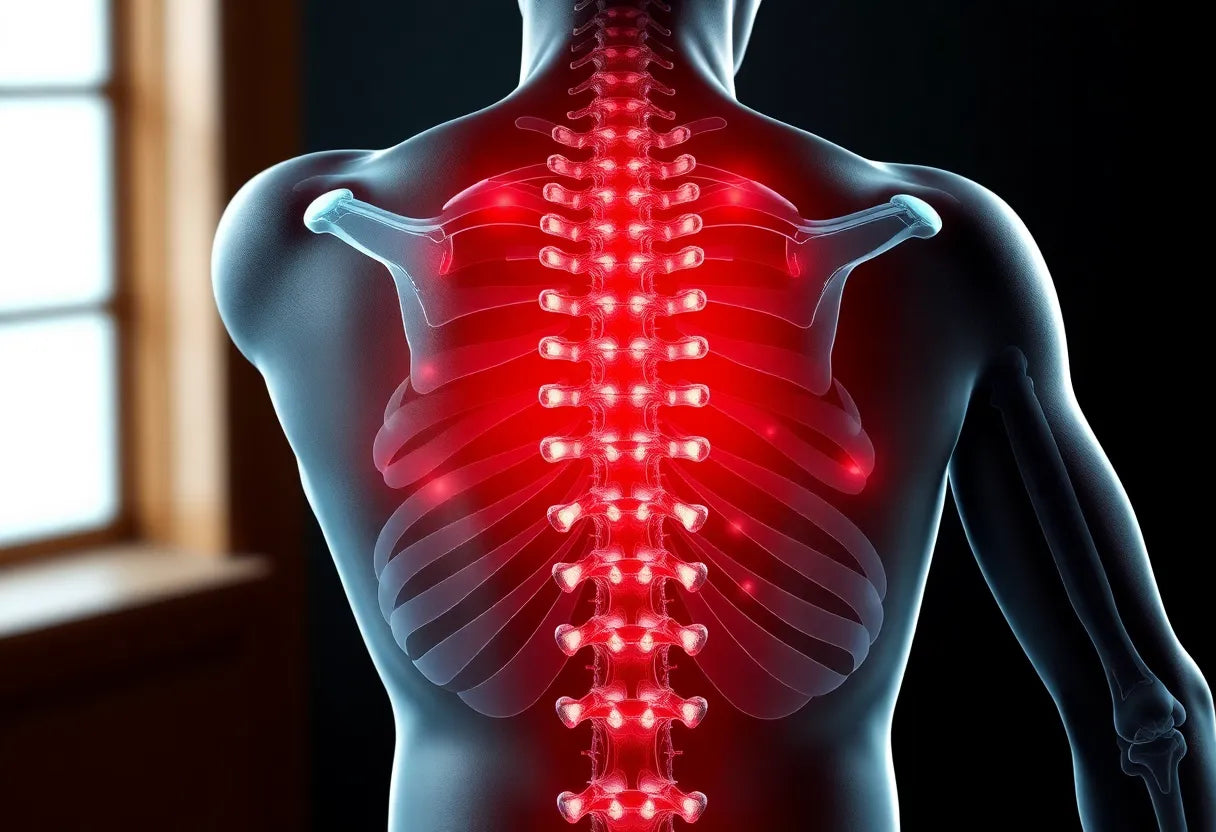Maintaining hip health is crucial for ensuring smooth and pain-free movement in our daily lives. The hips play a pivotal role in supporting our body weight and facilitating a range of movements, from walking and running to bending and lifting. Unfortunately, many people experience hip-related issues such as pain, stiffness, and reduced mobility, often as a result of sedentary lifestyles, aging, or injury. These problems can significantly impact one’s quality of life, making it essential to focus on exercises that enhance hip health.
Understanding the importance of hip health
The hips are among the most vital joints in the body, crucial for maintaining overall mobility and stability. When hip function is compromised, it can lead to discomfort and limitations in performing everyday tasks. Common issues such as hip pain and stiffness can arise due to prolonged sitting, lack of exercise, or degenerative conditions like arthritis. Addressing these issues early with targeted exercises can prevent further complications and improve quality of life.
Incorporating hip exercises into your routine offers numerous benefits. These exercises help alleviate pain, improve strength, and boost flexibility, making daily movements more comfortable and efficient. By focusing on strengthening the muscles around the hips, such as the gluteal muscles, and enhancing hip mobility, individuals can experience significant improvements in their overall physical health.
The role of hip exercises in pain-free living
Targeted hip exercises are essential not only for rehabilitation but also for the prevention of common hip pathologies. These exercises focus on strengthening the gluteal muscles and improving hip mobility, which are crucial for maintaining hip health. Strengthening the glutes helps to stabilize the pelvis and support the lower back, reducing the risk of injury and pain.
The exercises that will be introduced are clinically backed and designed to provide practical benefits. They aim to enhance hip function, reduce pain, and improve overall mobility. By regularly practicing these exercises, individuals can maintain a pain-free lifestyle and enjoy greater ease in their daily activities.
In summary, prioritizing hip health through targeted exercises is a proactive approach to ensuring long-term mobility and comfort. As we delve deeper into specific exercises, it’s important to remember that consistency and proper technique are key to achieving the best results. Whether you're looking to prevent issues or rehabilitate existing ones, hip exercises serve as an effective tool in promoting a healthier, more active lifestyle.

Men's Posture Shirt™ - Black
Stimulates muscles, improves posture, and may relieve pain for daily activities or exercise.
Effective hip exercises for strength and mobility
Building on the importance of hip health, let's explore specific exercises that target the muscles critical to hip function. These exercises are designed to enhance strength and mobility, offering a comprehensive approach to maintaining healthy hips. By incorporating these movements into your routine, you can address common issues such as pain and stiffness, while also preventing future injuries.
Forward lunges
Forward lunges are a foundational exercise that effectively activates the gluteus maximus and medius. This exercise not only strengthens the hips but also improves balance and coordination.
- How to perform: Stand upright with your feet hip-width apart. Step forward with one leg, lowering your hips until both knees are bent at a 90-degree angle. Ensure the front knee is directly above the ankle and the back knee hovers just above the ground. Push back to the starting position and repeat on the other leg.
- Benefits: This exercise enhances hip stability and strength, crucial for everyday movements and athletic activities.
Single-leg squats
Single-leg squats are an excellent exercise for improving glute activation and overall lower body strength. They also play a significant role in enhancing stability and reducing knee pain.
- How to perform: Stand on one leg with the other leg extended forward. Lower your body by bending the knee of the supporting leg, keeping the chest lifted and core engaged. Return to the starting position and switch legs.
- Benefits: This exercise promotes high glute activation, improving strength and stability in the hips.
Barbell hip thrusts
Barbell hip thrusts are particularly effective for promoting gluteus maximus hypertrophy and enhancing overall lower body strength. They support hip extension and core stability, making them a staple in any hip-focused workout.
- How to perform: Sit on the ground with your upper back resting on a bench and feet flat on the floor. Roll a barbell over your hips and thrust upwards by squeezing the glutes. Lower back to the starting position and repeat.
- Benefits: This exercise is key for building strong glutes and supporting hip function.
Continued exercise techniques and benefits
Further strengthening and mobility can be achieved through additional exercises that target specific muscles around the hips. These exercises offer a well-rounded approach to hip health, ensuring comprehensive strength and flexibility.
Resistance band external rotations
Resistance band external rotations strengthen the gluteus medius and deep hip rotators. They are ideal for targeted rehabilitation and improving hip stability.
- How to perform: Attach a resistance band around your thighs just above the knees. Stand with feet shoulder-width apart and slightly bend the knees. Rotate the knees outward against the band's resistance, then return to the starting position.
- Benefits: This exercise is excellent for enhancing hip stability and function.
Hip hikes
Hip hikes engage the hip abductors, enhancing balance and control. They are particularly useful for rehabilitation and preventing falls.
- How to perform: Stand on a step or platform with one foot hanging off the edge. Lower the hanging leg by tilting the hip, then lift it back to the starting position.
- Benefits: This exercise targets the hip abductors, improving balance and hip control.
Lateral step-ups
Lateral step-ups focus on the gluteus medius and minimus, improving lateral stability and functional movement.
- How to perform: Stand beside a step or platform. Step sideways onto the platform with one foot, then bring the other foot up. Step back down and repeat on the opposite side.
- Benefits: This exercise enhances lateral stability, crucial for dynamic movements.
Incorporating these exercises into your fitness routine can significantly improve hip strength, mobility, and overall health. By focusing on these targeted movements, you can enjoy a more active and pain-free lifestyle, with greater ease in daily activities.

Lumbar support belt
Supports and stabilizes the lower back; ideal for pain relief and daily support.
Mobility and flexibility enhancements
To further enhance hip health, incorporating mobility and flexibility exercises is essential. These exercises not only improve the range of motion but also help in reducing stiffness, making everyday movements smoother and more comfortable. Dynamic stretching routines are particularly effective in preparing the hips for physical activity and preventing injuries.
Dynamic stretching routines
Dynamic stretches such as leg swings, hip circles, and lunges with a twist are excellent for loosening up the hip joints and surrounding muscles.
- How to perform: Begin with leg swings by standing and swinging one leg forward and backward, then side to side. For hip circles, stand with feet hip-width apart and make circular motions with your hips. Lunges with a twist involve stepping forward into a lunge while twisting your torso towards the leading leg.
- Benefits: These exercises enhance hip flexibility and range of motion, reducing stiffness and preparing the hips for more intense physical activities.
Targeted exercises for specific conditions
For individuals dealing with specific hip conditions such as osteoarthritis, bursitis, or snapping hip, tailored exercise routines can provide significant relief and improve function. These routines typically involve gentle resistance work, stretching, and functional movement practice to accommodate the specific needs of each condition.
For example, individuals with osteoarthritis can benefit from low-impact exercises that focus on gentle activation of the hip muscles, while those with bursitis may find relief through exercises that emphasize external rotation and hip stability. It's important to consult with a healthcare professional to ensure these exercises are appropriate for your specific condition.
Frequently asked questions
How often should I perform hip exercises for optimal results?
Aim to perform hip exercises at least 2-3 times a week, allowing rest days in between sessions for recovery and muscle repair.
Can I do these exercises if I have existing hip pain?
Yes, you can perform these exercises even if you have existing hip pain, but it is crucial to consult a healthcare professional to tailor the exercises to your specific condition and avoid exacerbating the pain.
How long before I see improvements in hip strength and mobility?
Results can vary depending on individual factors, but many people start noticing improvements in hip strength and mobility within 4-6 weeks of consistent practice.
Are these exercises suitable for all fitness levels?
Yes, these exercises are suitable for all fitness levels. Modifications can be made to accommodate beginners or those with limitations, ensuring everyone can benefit from improved hip health.
What equipment is needed for these exercises?
Minimal equipment is required for these exercises. You may use resistance bands, a barbell, or a bench for some exercises, but many can be performed using just body weight.
By consistently incorporating these hip exercises into your routine, you can significantly enhance your hip strength, mobility, and overall quality of life. Whether you're seeking to alleviate existing pain or prevent future issues, these exercises offer a practical and effective solution for maintaining healthy, pain-free hips.
Kilder
- BTE Technologies. "Hip Exercises." Therapy Spark.
- Reiman, M. P., & Manske, R. C. (2011). "The Assessment of Function in the Hip." Journal of Orthopaedic & Sports Physical Therapy.
- Lewis, C. L., & Sahrmann, S. A. "A Critical Review of Trunk and Hip Exercise Prescription." International Journal of Sports Physical Therapy.
- "Hip Exercise and Its Benefits." National Center for Biotechnology Information.
- "The Role of Hip Exercises in Pain Management." National Center for Biotechnology Information.
- Arthritis Foundation. "Exercise Benefits for Hip Osteoarthritis." Arthritis.org.
- Cleveland Clinic. "Do Hip-Opening Exercises Actually Provide Relief for Tight Hips?" Health Essentials.


















